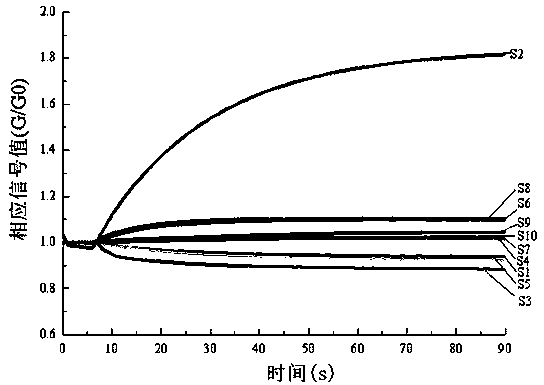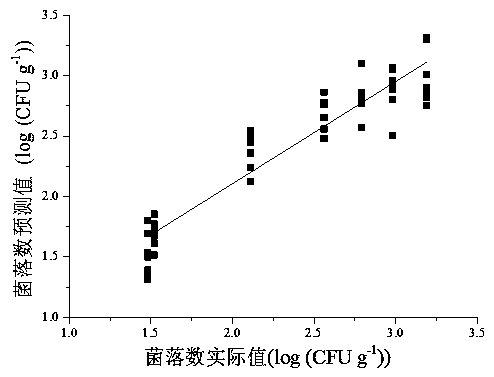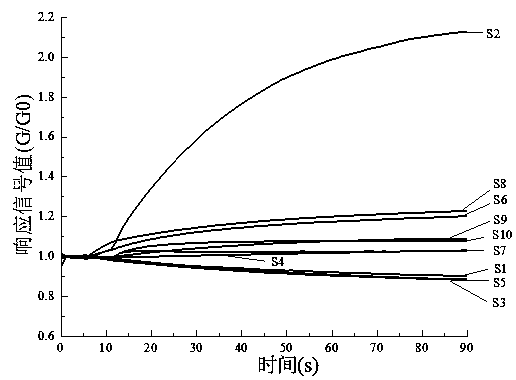A method for rapidly predicting the quantity of rice infected by aspergillus fungi based on an electronic nose
An Aspergillus fungus and electronic nose technology, applied in the field of microbial detection, can solve the problems of complex time-consuming, low efficiency, and high cost of fungal detection methods
- Summary
- Abstract
- Description
- Claims
- Application Information
AI Technical Summary
Problems solved by technology
Method used
Image
Examples
Embodiment 1
[0032] A method for quickly predicting the number of rice infected by Aspergillus jaundice based on electronic nose, its steps are as follows:
[0033] (1) Take the commercially available Jiangsu Xingjia rice as the experimental object, and place it at 110mW s / cm 2 After sterilizing for 30-60min under the ultraviolet lamp, 7 batches of rice samples were selected to inoculate 0.2mL concentration of 10 7CFU / mL Aspergillus leucobacter spore suspension, and stored at 28±1°C, 85% relative humidity. Take out a batch of rice samples every 24 hours and place them in a container at room temperature to seal. A total of 7 groups of samples were taken out (each group of samples was repeated 21 times), and each group was numbered 0d, 1d, 2d, 3d, 4d, 5d, 6d . The volume of the container is 500mL. After the sample is left to stand for 60 minutes, the headspace gas in the sealed container is saturated to obtain the headspace gas; before the start of each electronic nose test, the electronic...
Embodiment 2
[0042] A method for quickly predicting the number of rice infected by Aspergillus fumigatus based on electronic nose, its steps are as follows:
[0043] (1) Take the commercially available Jiangsu Xingjia rice as the experimental object, and place it at 110mW s / cm 2 After sterilizing for 30-60min under the ultraviolet lamp, 7 batches of rice samples were selected to inoculate 0.2mL concentration of 10 7 CFU / mL Aspergillus fumigatus spore suspension, and stored at 28±1°C, 85% relative humidity. Take out a batch of rice samples every 24 hours and place them in a container at room temperature to seal. A total of 7 groups of samples were taken out (each group of samples was repeated 21 times), and each group was numbered 0d, 1d, 2d, 3d, 4d, 5d, 6d . The volume of the container is 500mL. After the sample is left to stand for 60 minutes, the headspace gas in the sealed container is saturated to obtain the headspace gas; before the start of each electronic nose test, the electronic...
PUM
 Login to View More
Login to View More Abstract
Description
Claims
Application Information
 Login to View More
Login to View More - R&D
- Intellectual Property
- Life Sciences
- Materials
- Tech Scout
- Unparalleled Data Quality
- Higher Quality Content
- 60% Fewer Hallucinations
Browse by: Latest US Patents, China's latest patents, Technical Efficacy Thesaurus, Application Domain, Technology Topic, Popular Technical Reports.
© 2025 PatSnap. All rights reserved.Legal|Privacy policy|Modern Slavery Act Transparency Statement|Sitemap|About US| Contact US: help@patsnap.com



